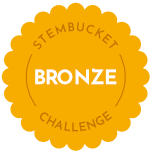Air-Powered Toy Car with Balloons as Propulsion Motor
ACES Challenge Entry

Bronze: Learning outcomes award
Participant:
Maliq Al Rayyan Putra Pradith
School:
SDIT Akmala Sabila Cirebon
Country:
Indonesia
Summary
With this balloon-powered toy car, students will be more curious and have fun in learning and using this media. Because this is an experiment about air and the form of compressed air as a propellant, this balloon-powered car is a fun science project to work on with the kids. This activity also teaches participants about recycling and how to turn used goods into fun toys. Toy cars can be made using tools and materials that are easily found nearby. The balloon itself is the motor that drives the speed of the car. When the balloon is filled and released, the air will be forced out, the balloon will shrink back to its original shape, and the air coming out of the balloon will propel the car forwards.
Learning and Competency Outcomes
Students gain scientific knowledge through practice. The aim is that all information obtained is based on scientific principles. The information presented is the result of findings and formulations that are objective and in accordance with the rules of physics, which are absolute.
Playful Aspects
Frugal Aspects
Utilization of used materials is a very efficient method for making this toy car, such as financial cost and space. This activity is more sustainable because it relies on used materials, such as plastic bottles. With this toy car game, teachers can apply innovative learning for students to make new breakthroughs by discovering the results of their experiments, while benefiting the natural world through the recycling of materials. This activity is a good lesson about recycling and how to turn used goods into educational activities in an affordable and sustainable way.
